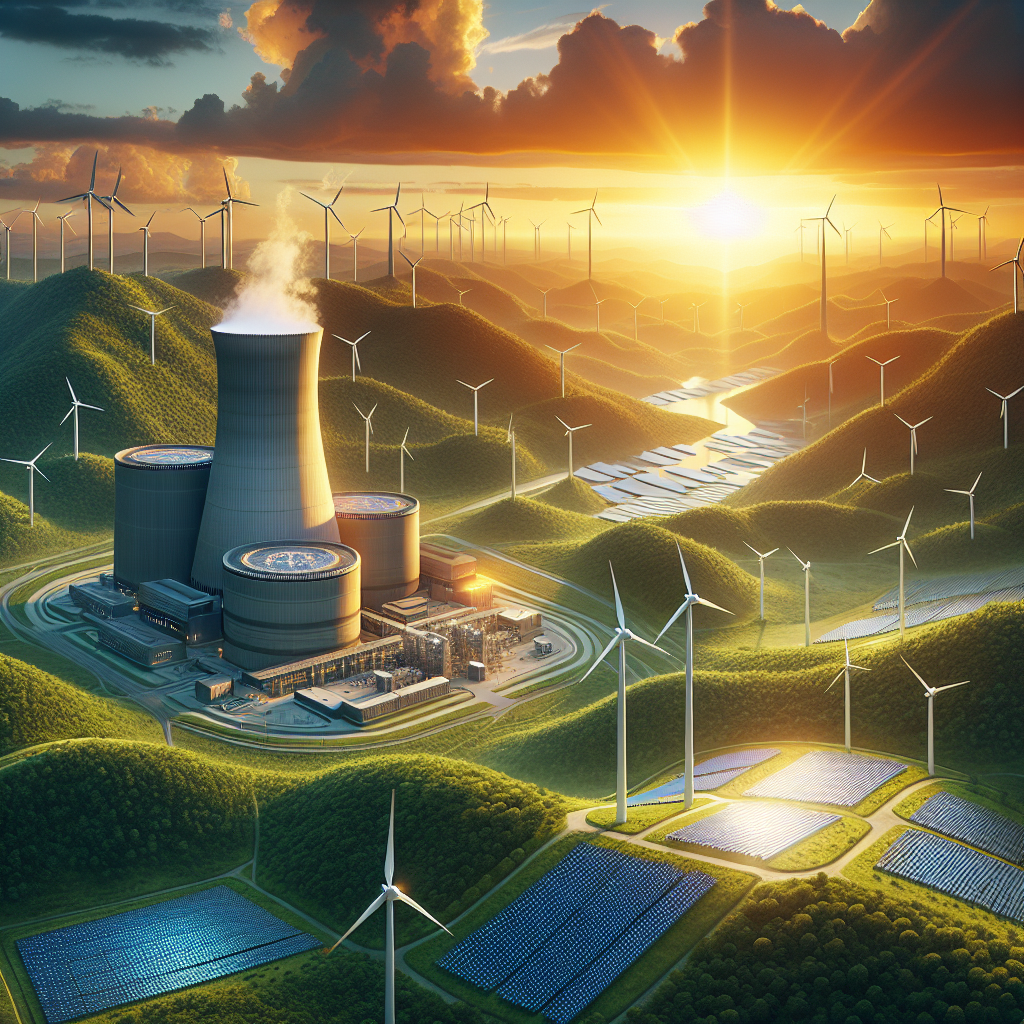Introduction
As the world grapples with the urgent need for sustainable energy solutions, nuclear power emerges as a promising player in the global energy landscape. While it often evokes mixed reactions from the public, understanding its role, advantages, and challenges is essential in the quest for a cleaner, greener planet. In this article, we’ll explore the vital function of nuclear energy within the broader context of sustainable energy.
Understanding Nuclear Power
Nuclear power is generated through a process called nuclear fission, where the nucleus of an atom splits into smaller parts, releasing a significant amount of energy. This energy is harnessed to produce electricity, making nuclear power one of the most efficient sources of energy available today. Unlike fossil fuels, the emissions produced during nuclear power generation are minimal, which has raised its appeal in the fight against climate change.
The Benefits of Nuclear Power
Nuclear power offers several advantages that contribute to a sustainable energy landscape:
- Low Greenhouse Gas Emissions: One of the most significant benefits of nuclear energy is its low carbon footprint. Unlike coal or gas, nuclear power plants do not emit carbon dioxide during operation, which makes them a valuable asset in reducing global warming.
- High Energy Density: Nuclear energy is incredibly efficient. A small amount of nuclear fuel can produce a vast amount of energy. In fact, a single uranium fuel pellet can generate as much energy as a ton of coal.
- Base Load Energy Source: Nuclear power provides a stable and continuous supply of energy, functioning as a reliable source of baseload electricity. This is crucial in maintaining the balance of supply and demand in the energy grid.
- Diversification of Energy Sources: Incorporating nuclear power into the energy mix can reduce reliance on fossil fuels, thus enhancing energy security and diversifying the energy portfolio.
Challenges Facing Nuclear Power
Despite its advantages, nuclear power faces several challenges that must be addressed:
- Waste Disposal: One of the primary concerns about nuclear energy revolves around the management of radioactive waste. Safe, long-term storage solutions are essential for minimizing environmental impact.
- High Initial Costs: The construction and decommissioning of nuclear power plants require significant financial investment. The costs can deter new projects, especially in comparison to rapidly decreasing renewable energy prices.
- Public Perception and Safety: Accidents such as Chernobyl and Fukushima have heightened public fear surrounding nuclear power. Effective communication and transparency are vital in rebuilding trust and acceptance.
- Regulatory Hurdles: The nuclear industry is heavily regulated, which can result in lengthy approval processes and increased costs. Streamlining regulations without compromising safety is essential for future development.
Nuclear Power and Renewable Energy: A Complementary Relationship
While renewable energy sources like wind, solar, and hydroelectric power are gaining traction, they are often intermittent and depend on weather conditions. Nuclear power can provide a stable foundation, ensuring energy availability even when renewable sources are temporarily offline. By working together, nuclear and renewable energy can create a balanced, resilient energy landscape.
The Future of Nuclear Power
The next few decades will be critical for nuclear energy. Innovations such as Small Modular Reactors (SMRs) and advanced fission technologies hold promise for increasing safety, efficiency, and flexibility. Countries around the world are re-evaluating their energy policies and considering the role of nuclear power in achieving climate goals.
Additionally, research into fusion energy, a virtually limitless source characterized by minimal waste, could revolutionize the energy sector. While we may still be some time away from practical fusion power, the exploration of such technologies underscores the potential of nuclear science in creating a sustainable energy future.
Conclusion
Nuclear power represents a crucial component in the pursuit of a sustainable energy landscape. With its low emissions, high energy density, and ability to provide a stable energy supply, it can complement renewable sources to form a diverse energy portfolio. However, to fully harness its potential, the challenges surrounding waste management, safety, and public acceptance must be addressed. As we move towards a greener future, embracing a mix of energy solutions—including nuclear—will be vital for achieving our climate goals.
FAQs
1. Is nuclear power safe?
Yes, nuclear power is considered safe when properly regulated. Modern technologies and rigorous safety procedures have significantly reduced the likelihood of accidents.
2. What happens to nuclear waste?
Nuclear waste is stored securely in specialized facilities designed for long-term containment. Research is ongoing to develop better waste management solutions.
3. Can nuclear power help combat climate change?
Absolutely, nuclear power produces minimal greenhouse gas emissions, making it a valuable ally in the fight against climate change.
4. How does nuclear power compare to renewable energy?
While renewable energy sources can be intermittent, nuclear power provides a reliable supply of electricity, making them complementary sources within a balanced energy system.
5. What is the future of nuclear energy?
The future of nuclear energy looks promising, with advancements in technologies like Small Modular Reactors (SMRs) and ongoing research into fusion, which could redefine energy generation.





